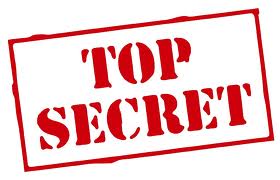What does it take to get a top score?
I was chatting with a former student recently about his amazing jump in SAT scores. He said he changed his mindset.
In Choke: What the Secrets of the Brain Reveal About Getting It Right When You Have To, Sian Beilock proposes that people have one of two mindsets – a fixed mindset or a growth mindset.
In a fixed mindset “you believe that your talents and abilities are set in stone and you must prove yourself over and over, trying to look smart and talented at all costs. This is the path to stagnation.”
In a growth mindset, on the other hand, “you know that talents can be developed and that great abilities are built over time. This is the path of opportunity and success. ”
I talk a lot about this book with my students!
Change your mind, change your results
With only 6 hours of tutoring, he pulled up his scores by 370 points!
- Writing: 670 (93rd percentile) to 760 (99th percentile)
- Critical Reading: 590 (77th percentile) to 720 (97th percentile)
- Math: 660 (87th percentile) to 800 (99th percentile)
Though I’d love to take some credit for that increase, as always, the glory completely rests with him.
We spent very little reviewing his wrong answers.* He really didn’t have a content or knowledge problem – he knew how to find the answers to most of the questions. It’s just that he couldn’t reach the scores that he wanted on test day.
So we spent most of our time coming up with specific strategies (what to do) instead of techniques (how to do it) he could use to get that perfect score. These included, among other things, taking the sections in only 20 minutes instead of 25 minutes to try and mimic the pressure of the testing conditions and curtail his heightened attention to detail (where he would stuck in a second-guessing loop.) And, conversely, a lot of conversation about relaxing and reducing testing pressure. But we mostly discussed perfect performance under pressure – and the mindset it takes to reach that perfect score.
Here’s what he said about it:
To be completely honest, the only dramatic change I made prior to this test was a change in mindset. As you know, my fundamental problem with test-taking (especially during the SAT) was second-guessing myself. This time, I took the test with the mentality that no matter what, I would finish each section with a few minutes to spare. This forced me to put down an answer, not over-analyze or rationalize my choice, and move right along. This paid off most in the writing and math sections.
My greatest score increase (in the reading section) was due entirely to how I spent my summer. Instead of taking practice tests over and over again, I decided to experiment with a simpler approach: reading voraciously. This got me in the habit of reading critically and got me good at guessing the meaning of words I didn’t know using context. Come test day, I was able to get through the readings in good time and retain what I had read while I was answering questions. Again, not second-guessing myself helped me pace myself and get through a lot of the harder questions.
In sum, the only real changes I made were a change in my approach to the test and an active effort to read more. Those alone have made all the difference!
I wanted to sincerely thank you for helping me with acquainting myself to the test and picking up on the strategies required to score well. I owe this score more to you than anyone else. Thank you for supporting me every step of the way!
A.N.
What can you do?
You can figure out why you are missing questions on the SAT.
- Is it a knowledge problem? (You don’t know how to solve a nested function or find the main idea of a passage.)
- A sloppiness problem? (You didn’t read the question carefully enough.)
- A speed problem? (You rushed through the problem and made a careless math error.)
- A confidence problem? (You just can’t seem to get the score you think you should be getting.)
You can figure out what math and grammar concepts are most tested.
You can learn what you don’t know to improve your weaknesses.
And more reading is always good!
* This is not the usual approach I take with my students. 🙂 Teaching is both an art and a science!
